Inside the high-stakes, death-defying world of scaling Mt. Everest

- Oops!Something went wrong.Please try again later.
- Oops!Something went wrong.Please try again later.
- Oops!Something went wrong.Please try again later.
In April, 2013, a group of Sherpas, the iconic Nepalese mountain guides, hung off the side of the mountain they call Sagarmatha, installing 3,000 feet of the 12 miles of fixed ropes added to Everest each year to aid inexperienced climbers.
Because it was dangerous work, the Sherpas carried hundreds of pounds of rope, ice screws and carabiners — most Western climbers took a rest day so the experienced crew could complete their task in relative safety.
Three experienced Europeans didn’t rest though, and their climbing eventually led to a shower of snow and ice landing on the rope workers below.
The Sherpas angrily converged on the Europeans, the insults flying.
Then a European climber foolishly called one Sherpa a “machikne,” a severe slight in Nepali referring to a person who enjoys sexual congress with his mother.
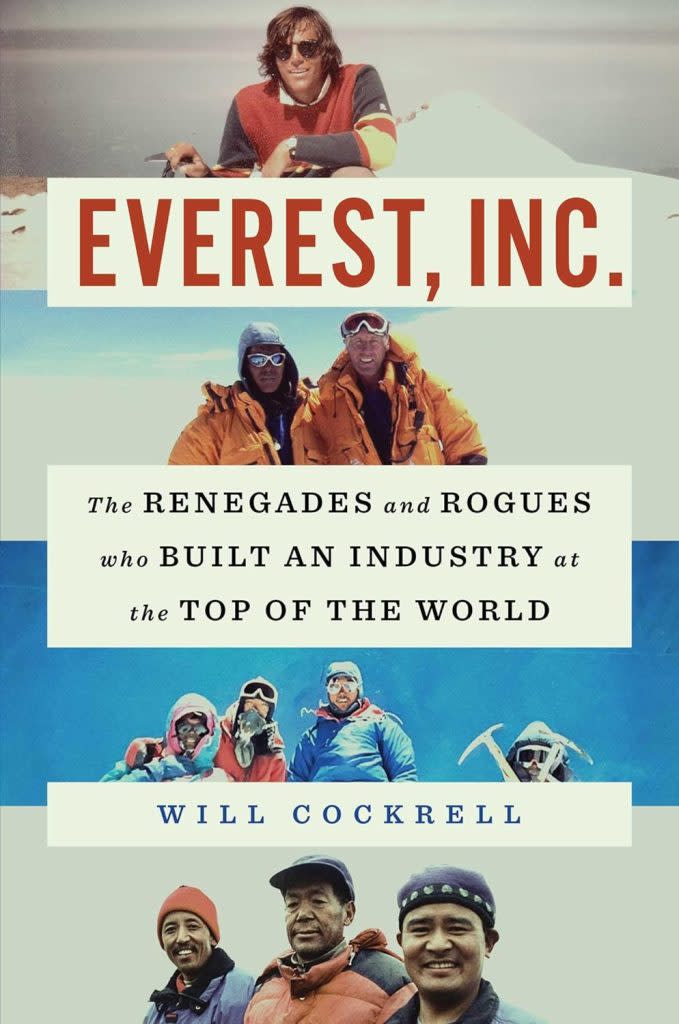
The Sherpas packed up and silently went down the mountain, leaving the job unfinished.
But when the three Europeans returned to camp, a crowd of some 400 Sherpas wearing face coverings and holding baseball-sized rocks descended on their tents.
Some of the younger Sherpas believed the European climbers deserved to die, but their more experienced elders preached calm.
Instead a simple ultimatum was delivered to the interlopers.
“They told us if we were not [off the mountain] in an hour they would kill all three of us,” one of the guilty Europeans recounts in Will Cockrell’s “Everest, Inc.: The Renegades and Rogues Who Built an Industry at the Top of the World” (Gallery Books, out now).
Climbing Mount Everest had long been an obsession of Westerners, beginning in the early 1920s when a Brit named George Mallory attempted the ascent numerous times.
His motivation for conquering Everest was famously “Because it’s there.”
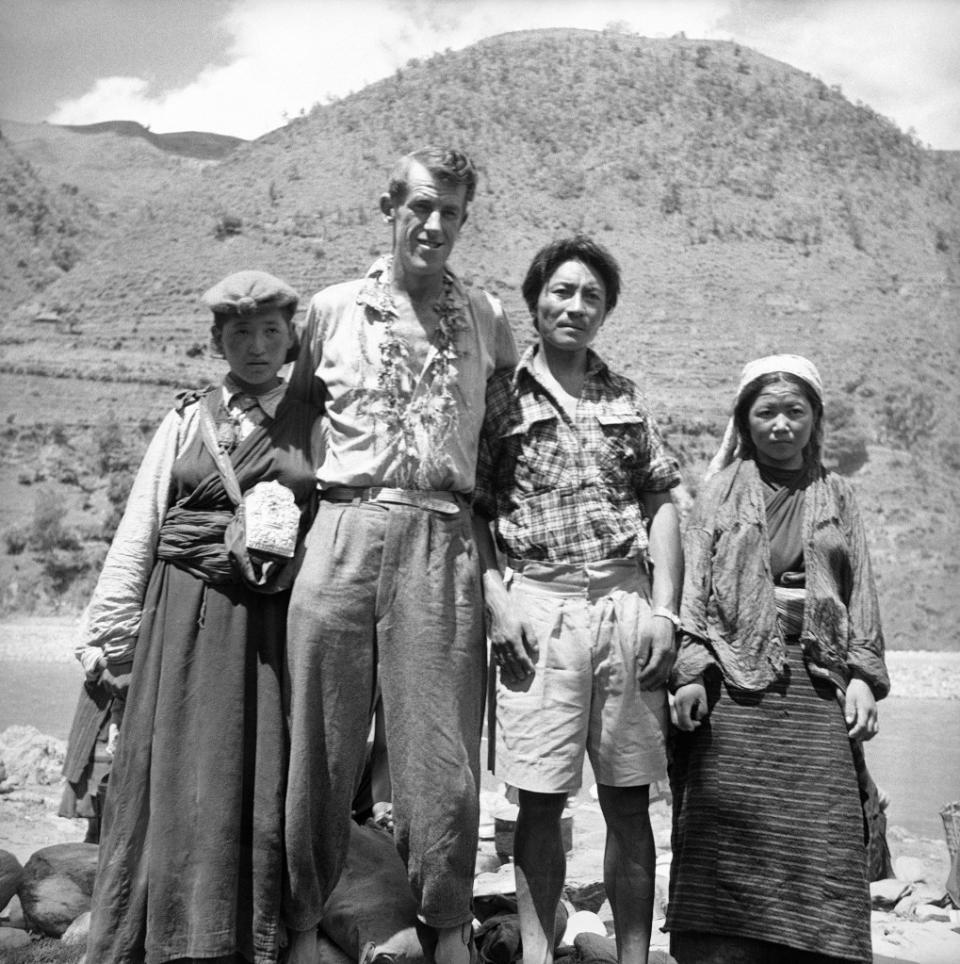
But on his final try to summit the world’s tallest mountain, Mallory and his climbing partner went missing, never to be seen alive again.
Everest wasn’t summited until 1953, when with the able help of the Sherpa Tenzing Norgay, a New Zealander named Edmund Hilary finally reached the top of the world.
For the next 40 years that achievement was rare, accomplished by under 400 people.
Since the early 1990s though, with the help of first Western and now Nepali guiding companies, nearly 12,000 people have summited Everest.
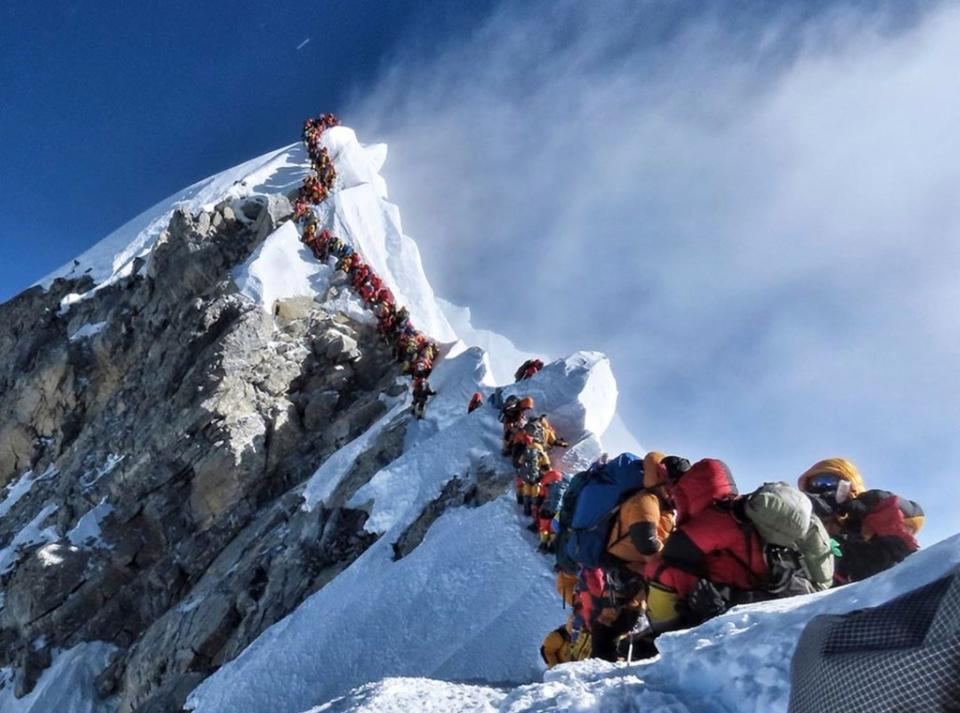
The shift from experts climbing Everest unaided to amateurs using guide companies to ascend the world’s tallest mountain began in the 1980s.
A gregarious businessman and inexperienced climber named Richard Bass was asked in 1982 to join an Everest expedition (mostly because he could fund the entire trip for the whole group).
Then, aided by Sherpas, the neophyte outdoorsman and 55-year-old Bass reached Everest’s peak.
“No mountain guide had ever brought someone to Everest before, bearing explicit responsibility for the person’s success and safety,” Cockrell writes.
Richard Bass’ success was especially impressive because climbing Everest could be fatal.
By Bass’ ascent only 119 people had summited while 63 died trying.
The dead had plummeted off ice cliffs, were swept away by avalanches, fell into and were buried alive in 150-feet-deep crevasses.
Others succumbed to exhaustion or oxygen deprivation in the mountain’s “death zone” above 28,000 feet, no more than 400 meters below the 29,031 foot summit.
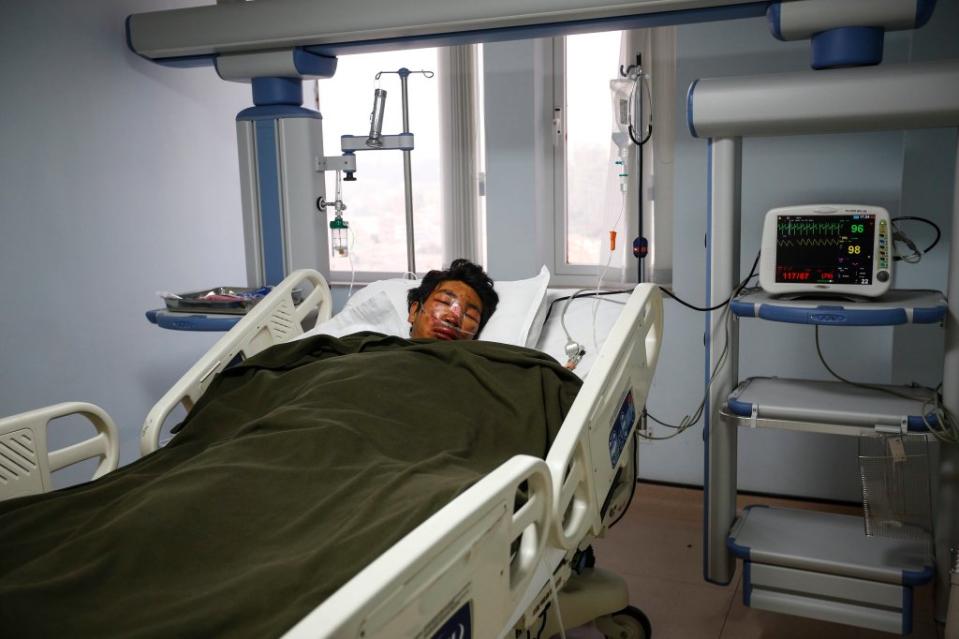
Often the deaths occurred dramatically. In 1996 one Western climber was lost in a snowstorm that fell “like a piano on a cartoon character,” and it was too late when he was found by a searching Sherpa.
Today it’s believed as many as 200 bodies remain frozen atop Everest.
“The base camps on both sides of the mountain have dozens of makeshift memorials to dead climbers, many … have seemingly vanished into thin air,” the book recounts.
Still, with the amateur, middle-aged Bass reaching Everest’s peak with the aid of professional guides, seasoned climbers saw an opening.
“A few entrepreneurial-minded mountain guides sensed an opportunity,” Cockrell says. “There were careers to be made.”
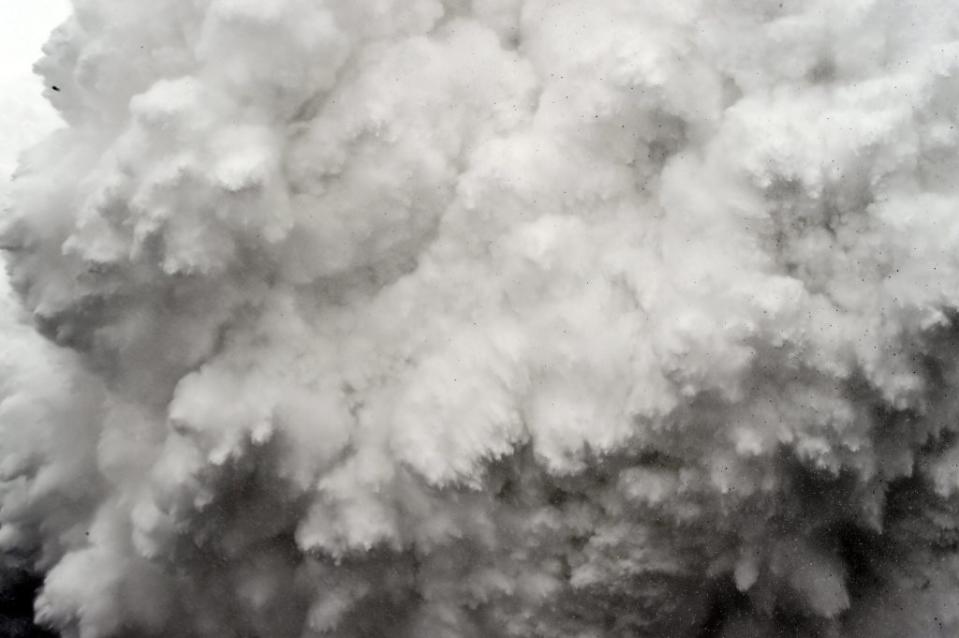
By the mid-90s the Everest guiding business was controlled by a “big 5” of Western-owned companies: International Mountain Guides, Himalayan Kingdoms, Himalayan Experience, Adventure Consultants, and Alpine Ascents International.
Working Everest soon became big business.
While there were 0 official guided tours up Everest in 1989, by 1995 there were 40, with business nearly doubling each year.
Some companies at the mountain’s base camp sold supplies, like ladders or bottled oxygen, while the guide companies led inexperienced climbers by providing logistics and routing, supervision and hand-holding.
The guides dramatically improved the success rate of Everest expeditions, with only 10% of climbers summiting prior to their existence but nearly 70% after.
Professional guides reduced the ratio of deaths to summits, too.
Not everyone loved the ease with which professional guides allowed amateurs to reach Everest’s peak.
While once Everest’s base camp was home to a select community of the world’s best climbers, today it can be filled with some 1,500 people each spring.
All enjoy bean bag chairs and high-speed Internet, masseuses and baristas, full bars and movie screens.
In 2006 the camp hosted a rock concert featuring the The Fixx, Stray Cats and Squeeze.
Later concerts in the Everest region included the Finnish band Ancara.
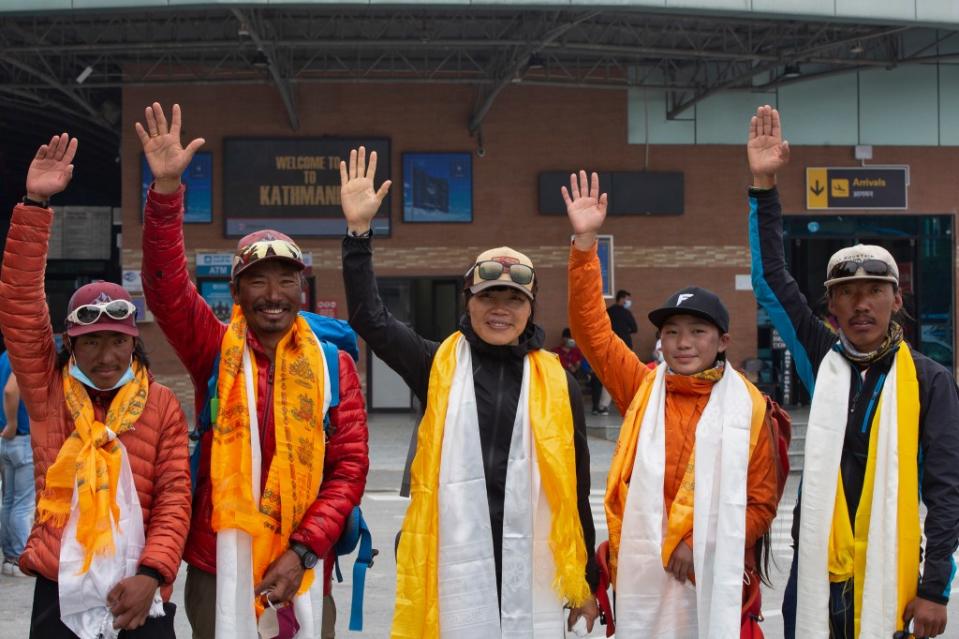
On the Tibet side of the mountain, it’s said Chinese government officials get rich running a racket of “whorehouses” and casinos.
There’s overcrowding on Everest now, too, including the famous 2019 photo showing as many as 200 climbers standing in a traffic jam on the mountain’s highest ridge, each standing in the “death zone” while waiting to summit.
If climbing Everest led to many Western profits, so has it helped the Sherpas.
When Westerners first began attempting to ascend Sagarmatha, Sherpas flooded their camps to secure jobs as porters lugging supplies up the mountain.
With nearly half of Nepal living below the poverty line, the work was much welcomed.
Still, the locals who helped so many Westerners scale Everest were never seen as equals.
When seven Nepalis died in an avalanche in 1922, for example, news reports glossed over the tragedy to emphasize “all whites are safe.”
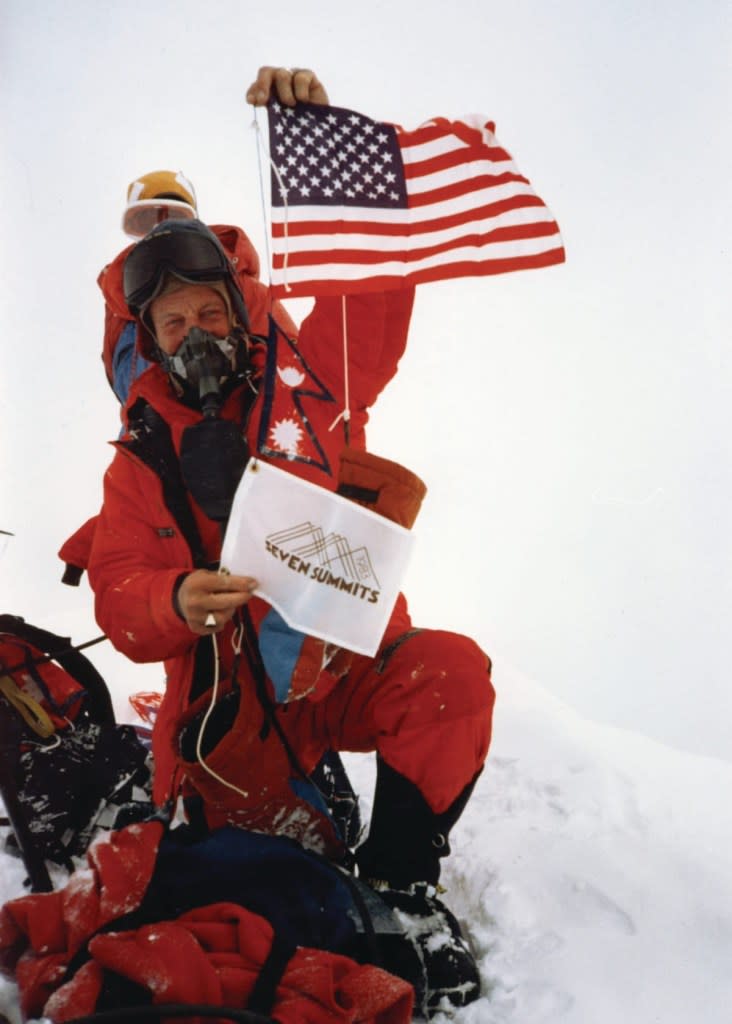
But a newer generation of Nepalis, raised in a country home to a 10-year Maoist revolution from 1996 to 2006, weren’t willing to accept the status quo.
In 2014 when a chunk of falling ice “as big as a 50-foot ocean wave” swept down the mountain and killed 16 Nepalis, the Sherpas went on strike, ending the season.
“If there were no Sherpas working, there was no Everest industry,” Cockrell writes. “Period.”
After the 2014 season was canceled by the strike and 2015 doomed by a devastating earthquake that killed nearly 10,000 Nepalis, when climbing resumed again in 2016 the dominance of the “Big 5” Western guiding companies was done.
Instead Nepali-owned outfits like Asian Trekking and Seven Summits Treks (started by 3 Nepali brothers) began to dominate.

In the last 10 years about 90% of the Everest guiding market has been taken over by locally-owned companies, many Sherpa-owned.
After nearly a century of being lackeys to their Western employers and clients, the Sherpas were at last leveraging their skills and experience on Sagarmatha to control the narrative.
That’s as it should be, as even many Westerners concede.
“There is only one Everest,” the American climber Conrad Anker says. “And it’s really for the country of Nepal.”

